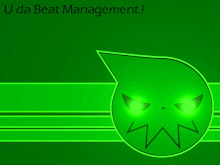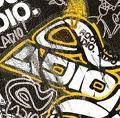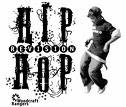The first skateboards were actually more like scooters, with the undercarriage consisting of rollerskate wheels attached to a two by four. Once the pushbar of the scooter-like contraption was broken off, skateboarding was born.
1950's
It wasn't until the 1950's, when the surfing craze was in full swing, that people realized skateboarding could recreate the feeling of riding a wave. This connection with surfing gave skateboarding a direction that would influence everything to come, from maneuvers and style, to terrain, fashion and attitude. It was during this time that modifications were made to the trucks making it easier to maneuver. By 1959 the first Roller Derby Skateboard was for sale.
1960's
In the early 1960's companies such as Larry Stevenson's Makaha and Hobie Alter's Hobie began to mass-produce the first true surfing-inspired skateboards. Some of the early proponents of surf-style skateboarding included Bill and Mark Richards, Dannu Bearer, Bruce Logan and Torger Johnson. Skateboarding became very popular almost overnight, and companies were fighting to keep up with demand. Over fifty million skateboards were sold within a three year period, and the first skateboard contest was held in Hermosa Beach, CA in 1963. Then in 1965 a slew of so-called safety experts pronounced skateboarding unsafe - urging stores not to sell them, and parents not to buy them. The skateboarding fad died as quickly as it had started, and the sport entered its first slump. Skateboarding would experience other slumps in its history. This pattern of peaks and valleys would come to be known as the "ten-year cycle," although the slumps weren't exactly ten years apart.
1970's
It was during this first slump that Larry Stevenson invented the kicktail, and the first generation of skateboarders laid down the foundation of tricks and style. However, they were still largely limited by equipment. Then in 1973 the urethane wheel was invented, revolutionizing the sport. The new wheels provided much better traction and speed and, combined with new skateboard specific trucks, allowed skaters to push the difficulty of maneuvers to new levels. Tricks at this time consisted of surfing maneuvers done on flat ground or on banks. Empty swimming pools and cylindrical pipes were exploited as terrain for the first time.
During the 1970's skateboarding experienced a large growth stage whish saw the construction of numerous concrete skateparks, a rank of professional skaters, magazines and movies. During this period modern skateboarding evolved to include vertical skating among its disciplines of slalom, downhill, freestyle and longjump.
Key advances in the sport included the aerial, the invert and the ollie, which may be the single most important trick in the evolution of skateboarding, next to the kickturn. This was the first time skateboarding had stars, some of the first really big names being Tony Alva, Jay Adams and Stacy Peralta. The look of skateboards also changed from being six to seven inches in width to over nine inches, providing better stability on vertical surfaces. Near the end of the 70's, spiraling insurance and slowing attendance forced all but a few skateparks out of business and skateboarding entered its! Second slump.
1980's
In the 80's the plywood ramp and streetstyle revitalized skateboarding just as the urethane wheel had revitalized the sport in the 70's. Forced to take an underground, do-it-yourself attitude, skaters began to create their own wooden skate ramps in backyards and empty lots and turn previously unrideable street terrain, such as walls an handrails, into free-skate parks. Skater-owned companies became the norm and innovations in board and truck size allowed the trick envelope to be pushed even further. This generation had its own group of skate stars, some of whom still compete today including Tony Hawk and Steve Caballero. Towards the end of the 80's the focus shifted to street skating and Vert riding became less popular, it was the era of the first street stars like Mark Gonzales, Natas Kaupas and Mike Vallely.
With all this grass-roots action taking place it was inevitable that skateboarding would go through another growth phase. This time the cycle peaked around 1987 after skateboarding had directly influenced international culture ranging from the hard-edged punk style of music that most skaters preferred to the baggy, earth-tone clothes and retro tennis shoes that skaters wore.
The current cycle of skateboarding has been fueled by many items including new companies, more varied and difficult terrain, a new, more hard-core, almost dangerous attitude, and most importantly by a new generation of kids who have discovered the exhilaration feeling of rolling along of a board with wheels. Some of the people who exert heavy influence on the sport are former pros who have started companies like Steve Rocco of World Industries. The ollie has come into its own as the foundation for 80% of street tricks and about 60% of vert tricks, with the focus being on more technical and larger tricks.
1990's
In regards to the "ten-year cycle," the sport once again started on an upward swing in 1995, due in part to exposure it received from ESPN's first Extreme Games in Rhode Island. This served to bring skateboarding, which had long been viewed as a rebel sport, perhaps because of the danger and occasional illegality of the endeavor, a step closer to the mainstream. Many of the skaters who competed felt that ESPN's coverage of the sport raised skateboarding's overall image with the general public and is a good thing for the future of the sport. In 1996 the Extreme Games were again held in Rhode Island, once more exposing the sport of skateboarding to millions of people. Skateboarding was also included in the 1997 Winter X Games in the form of a CrossOver event that also included in-line skating, bicycle stunt, and snowboarding.
The impact of media coverage on skateboarding has moved it from an underground sport to a spectator sport over the last four years. It was brought an influx of companies and their advertising dollars, which had previously ignored skateboarding, as a vehicle for promotional purposes. Advertisers have seen that skateboarding has become a prime sport through which they can reach their favorite demographic: youth males.
Skateboarders have been present in campaigns for products from soft drinks to potato chips, candy to phone companies. Thus, most of what is happening in skateboarding today is coming not from the skateboarders themselves, but from corporate sponsors and the mass media. The primary focus of the sport remains on street skating, as can be seen throughout both the editorial and advertising pages of the major skateboard magazines, where street skating photos continue to dominate. However vert skating is making a comeback, due in part to the large number of new skateparks being built. These skateparks have also given boost to the skating community in many towns. The many different ramps, pipes and bowls present at these parks have led to a change in equipment. These technological changes applied to skate products have improved skateboarding hear steadily over the last two decades. While in the early 90's small boards and tiny wheel ruled, now there is a wide range of boards and wheels being seen under the feet of skateboarders. Wheel diameters are larger, deck width continues to grow, and longboards are gaining in popularity, especially in beach communities and among those that just want to use their skateboards to cruise or as a mode of transportation. Downhill skateboarding has also seen resurgence in recent years due in part to the visibility of the street luge.
One of the biggest trends at work is among softgoods. In the past, clothing fashions have consistently reflected the changes influenced by those who skate. Footwear is currently getting all the attention. According to the Transworld Skateboarding Business Summer 1998 Retailer Survey shoes represented 26.5 % of the market share, followed by decks (26%), apparel (16%), trucks (11.5%), wheels (11%), and accessories (9%).
There have been many organizations and governing bodies for skateboarding throughout its history. The two main organizations today are the IASC (International Association of Skateboarding Companies), and World Cup Skateboarding, which is the leading competition organization. World Cup Skateboarding is run by former NSA (National Skateboarding Association) president Don Bostick, with competitions featuring Street and Vert disciplines. Competitors are usually on factory teams, rather than national teams. This is due to the growth of sponsorship and sponsorship dollars put into events, which has changed the face of competitive skateboarding tremendously. Skateboarding is beginning to earn respect as professional athletes and are receiving greater amounts of purse money from contests.
2000's
"Today a pro can make anywhere from $1000 to $10,000 a month," says Danielle Bostick of World Cup Skateboarding and the X Games. These earnings are based on winnings, depending on how well a skater places in any given competition and how many competitions a skater competes in during any given month. Most skaters who are sponsored also earn a monthly salary from one or more companies, which sponsors them as team riders. This is a considerable change from the past when pro skaters had to work a regular job as well as compete according to Bostick.
Skateboarding can be enjoyed by kids as young as two years, but the majority of pro skaters' range from early teens to early twenties. Most skateboarders don't train in any usual sense of the word, and they don't even think about their diet. Skaters just do what they love to do: skate, all the time. Skateboarding is fun, and when having fun is the goal, it never seems like training. Of course many skateboarders do other things for fun as well, such as surfing and snowboarding, which is actually extreme sports cross-training.
 
|

















